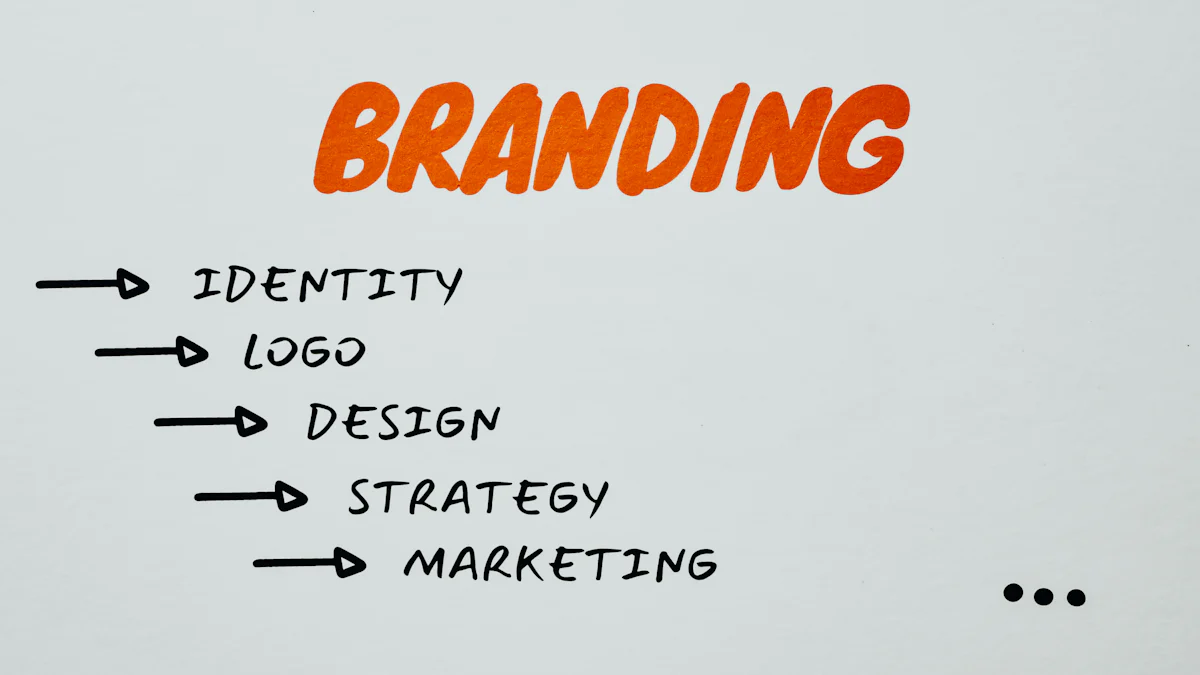Why Brand Analysis Matters for Business Success

Brand analysis helps you uncover your business's strengths and weaknesses. It reveals opportunities for growth and provides clarity about your market position. By studying competitors, you can identify their successful strategies and pinpoint areas where they fall short. This insight allows you to make smarter decisions and outperform them. Additionally, analyzing statistics like sales and demand helps you predict outcomes and reduce risks. With this data, you can align your strategies with market trends and customer needs. Ultimately, brand analysis equips you with the tools to stay competitive and achieve long-term success.
What Is Brand Analysis?
Definition and Purpose
Brand analysis is a systematic process that evaluates your brand's identity, positioning, and strategy. It helps you understand how customers, competitors, and stakeholders perceive your brand. This process identifies gaps and opportunities for improvement, ensuring your brand remains relevant and competitive.
To conduct a brand analysis, you need to collect and analyze data from multiple sources. These may include surveys, interviews, and social media analytics. You should assess key factors such as brand awareness, reputation, loyalty, and equity. By doing so, you can uncover strengths, weaknesses, opportunities, and threats that impact your brand's performance.
Unlike other forms of business analysis, brand analysis focuses specifically on how your brand supports marketing and sales efforts. It examines customer needs, competitor actions, and brand perception. This targeted approach ensures your strategies align with market demands and customer expectations.
Core Components
Brand Identity and Messaging
Your brand identity defines how your business presents itself to the world. This includes your logo, tagline, tone of voice, and overall messaging. A strong identity ensures your brand stands out and resonates with your target audience. You should evaluate whether your messaging aligns with your values and appeals to your customers.
Customer Perception and Feedback
Customer perception shapes how people view your brand. Gathering feedback through surveys, reviews, and social media interactions helps you understand their opinions. This insight allows you to address concerns, improve satisfaction, and build trust with your audience.
Competitive Landscape
Analyzing your competitors reveals their strengths and weaknesses. By studying their strategies, you can identify areas where your brand can excel. This knowledge helps you differentiate your offerings and position your brand more effectively in the market.
Market Trends and Opportunities
Market trends influence customer behavior and preferences. Staying informed about these trends helps you adapt your strategies to meet evolving demands. Identifying opportunities within these trends allows you to innovate and stay ahead of the competition.
Why Brand Analysis Is Important
Understanding Market Position
Understanding your market position helps you see where your brand stands compared to competitors. Brand analysis gives you the tools to evaluate this position effectively. You can study competitors and their strategies to identify strengths and weaknesses. This includes analyzing their marketing tactics, product quality, online presence, and customer reviews. Surveys and focus groups also help you understand your target market and uncover competitive advantages. These methods allow you to determine how your brand fits into the larger market and where you can improve.
Improving Customer Perception
Customer perception directly impacts your brand's success. Brand analysis helps you gather valuable insights into how customers view your business. By collecting feedback through surveys, reviews, and social media, you can identify areas where your brand excels and where it falls short. Addressing these concerns builds trust and improves satisfaction. When customers feel heard and valued, they are more likely to stay loyal to your brand. This process strengthens your relationship with your audience and enhances your reputation.
Supporting Strategic Decisions
Aligning Marketing Efforts
Brand analysis ensures your marketing efforts align with your goals. By understanding your audience and market trends, you can create campaigns that resonate with customers. This alignment increases the effectiveness of your marketing strategies and ensures your message reaches the right people.
Enhancing Product or Service Offerings
Analyzing customer feedback and market trends helps you refine your products or services. You can identify what customers value most and focus on improving those aspects. This approach ensures your offerings meet customer needs and stand out in the market.
Identifying Growth Opportunities
Brand analysis uncovers opportunities for growth by highlighting gaps in the market. Studying competitors and customer preferences reveals areas where your brand can expand. Whether it's entering a new market or launching a new product, these insights guide your decisions and help you grow strategically.
Key Benefits of Brand Analysis

Identifying Competitive Advantages
Brand analysis helps you uncover what sets your business apart from competitors. By studying their market positions, you can identify their strengths and weaknesses. This insight allows you to define your unique competitive advantage and refine your strategies. For example, you might discover that your competitors excel in customer service but lack innovation in product design. This knowledge gives you the opportunity to focus on innovation and stand out in the market.
Key benefits of identifying competitive advantages include:
- Improved understanding of your market position
- Enhanced marketing strategies tailored to your strengths
- Informed decision-making for future business moves
To achieve this, follow these steps:
- Define your brand's competitive advantage.
- Understand your competitors' strategies.
- Decide on your next move to outperform them.
This process ensures your business remains relevant and competitive.
Enhancing Customer Loyalty
Customer loyalty is essential for long-term success. Brand analysis helps you understand what keeps your customers coming back. By gathering feedback, you can identify areas where your brand excels and where improvements are needed. For instance, offering personalized services and maintaining effective communication channels can significantly boost customer satisfaction. A strong commitment to addressing customer concerns fosters trust and loyalty.
Consider these factors when enhancing loyalty:
- Personalize your services to meet individual customer needs.
- Use clear and consistent communication to build stronger relationships.
- Actively seek and implement customer feedback to show you value their opinions.
When customers feel valued, they are more likely to remain loyal to your brand.
Optimizing Marketing Strategies
Brand analysis enables you to fine-tune your marketing efforts. By evaluating competitors’ strategies, you can identify gaps in the market and create campaigns that resonate with your audience. Tracking key performance indicators (KPIs) helps you measure the effectiveness of your campaigns and make data-driven adjustments. Predictive analytics allows you to forecast customer behavior, ensuring your strategies stay ahead of trends.
Here are some ways brand analysis optimizes marketing strategies:
- Competitive analysis reveals market opportunities.
- Performance measurement ensures campaigns deliver results.
- Predictive analytics helps you anticipate customer needs.
- Attribution modeling identifies the most effective marketing channels for budget allocation.
These tools and techniques ensure your marketing efforts are both efficient and impactful.
Strengthening Brand Reputation
Your brand reputation determines how customers perceive your business. A strong reputation builds trust, attracts new customers, and retains existing ones. Brand analysis plays a vital role in strengthening this reputation by identifying areas for improvement and highlighting what your brand does best.
To measure your progress, you can track key metrics that reflect your brand's standing in the market. The table below outlines some of the most effective metrics:
| Metric | Description | |-----------------------|-------------------------------------------------------------------------------------------------| | Sentiment Analysis | Measures how people feel about your brand (positive, negative, or neutral). | | Reputation Score | Indicates how much people trust and believe in your brand’s credibility. | | Brand Loyalty | Tracks repeat customers and overall customer loyalty. | | Social Media Research | Calculates social media reach, including follows, interactions, and mentions. | | Google Rankings | Reflects brand promotion and reputation through search engine optimization. | | Online Reviews | Evaluates the impact of online ratings and reviews on brand reputation. | | Website Visits | Monitors user visits, duration, and engagement on the website. | | Subscriptions | Tracks the number of subscriptions to gauge interest and engagement with the brand. |
By focusing on these metrics, you can identify what drives positive sentiment and trust. For example, improving your online reviews or increasing social media engagement can significantly enhance your reputation. When customers see your brand as credible and trustworthy, they are more likely to recommend it to others. This creates a ripple effect, further solidifying your position in the market.
Driving Revenue Growth
Brand analysis directly impacts your ability to grow revenue. It helps you understand customer preferences, optimize marketing investments, and uncover new opportunities. Strengthening consumer predisposition toward your brand can lead to higher sales volumes and future growth potential. For instance, when customers feel a strong connection to your brand, they are more likely to choose your products over competitors.
Optimizing your marketing efforts also plays a crucial role. By allocating resources to the most effective channels, you can enhance brand activation and achieve faster growth rates. Additionally, identifying untapped markets or innovative product ideas can double your chances of success. For example, introducing a new product line based on customer feedback can open new revenue streams.
Brand analysis ensures you stay ahead of the competition by finding new ways to meet customer needs. It equips you with the insights needed to adapt to market changes and seize growth opportunities. When you align your strategies with these insights, you create a sustainable path to increased revenue.
How to Conduct a Brand Analysis
Define Your Brand Goals
Defining your brand goals is the first step in conducting a successful brand analysis. Clear and measurable goals provide direction and help you track progress. Follow these steps to define your goals effectively:
- Set specific and measurable objectives, such as increasing brand awareness by 25% within a year.
- Align your goals with your overall marketing and business strategies to ensure consistency.
- Consider your target audience's needs and preferences when setting goals.
- Analyze competitors to identify gaps and opportunities in the market.
- Collect data from surveys, social media analytics, and other sources to assess your current brand position.
- Identify your brand's strengths, weaknesses, opportunities, and threats based on the collected data.
By following these steps, you can create goals that guide your brand toward growth and success.
Gather and Analyze Customer Feedback
Customer feedback is a valuable resource for understanding how your brand is perceived. Gathering and analyzing this feedback helps you identify areas for improvement. Use these best practices to make the most of customer feedback:
- Collect feedback at key moments, such as after purchases or support interactions.
- Define clear objectives to guide your analysis and focus on what you want to learn.
- Combine quantitative data, like survey results, with qualitative insights from reviews or interviews.
- Regularly audit your data collection processes to ensure accuracy and quality.
- Use AI and automation tools to scale your analysis and uncover deeper insights.
- Share feedback insights with relevant teams to ensure everyone benefits from the data.
- Close the loop with customers by following up on their feedback and showing them their input matters.
When you prioritize customer feedback, you strengthen relationships and improve your brand's reputation.
Evaluate Competitors
Evaluating competitors gives you insights into their strategies and helps you identify opportunities to differentiate your brand. Use these tools and methods to analyze competitors effectively:
- Ahrefs and Moz provide insights into competitors' SEO strategies, including traffic and keywords.
- Sprout Social and Brandwatch reveal social media performance and sentiment.
- Crayon offers a comprehensive view of competitor strategies and market dynamics.
- BuzzSumo highlights competitors' content strategies and engagement levels.
- AdEspresso uncovers advertising strategies and campaign performance.
- Search engines help you identify direct and indirect competitors through keyword searches.
By leveraging these tools, you can gain a deeper understanding of your competitors and refine your strategies to stand out in the market.
Assess Brand Performance Metrics
Assessing brand performance metrics helps you measure how well your brand resonates with your audience. These metrics provide a clear picture of your brand's strengths and areas for improvement. By tracking these indicators, you can make informed decisions to enhance your brand's impact.
Key metrics to evaluate include:
- Brand Awareness: Measures how familiar your audience is with your brand.
- Presence Score: Tracks your visibility across various platforms.
- Brand Reputation: Reflects how customers perceive your brand's credibility.
- Brand Equity: Indicates the value your brand adds to your products or services.
- Brand Loyalty: Monitors customer retention and repeat purchases.
- Share of Voice (SOV): Compares your brand's visibility to competitors.
- Market Share: Shows your brand's position in the industry.
- Digital Channels Distribution: Evaluates your performance across online platforms.
- Social Media Reach: Measures engagement and audience size on social media.
- SEO Metrics: Tracks search engine rankings and organic traffic.
- Return on Investment (ROI): Assesses the profitability of your marketing efforts.
- Customer Lifetime Value (CLV): Estimates the total revenue a customer generates over their relationship with your brand.
Tracking these metrics ensures you stay aligned with your goals and adapt to market changes effectively.
Use Effective Tools and Techniques
SWOT Analysis
SWOT analysis helps you identify your brand's strengths, weaknesses, opportunities, and threats. This tool provides a structured way to evaluate internal and external factors affecting your brand. For example, you can uncover areas where your brand excels and pinpoint challenges that need addressing. Use this analysis to refine your strategies and capitalize on growth opportunities.
Customer Surveys and Focus Groups
Customer surveys and focus groups allow you to gather direct feedback from your audience. Surveys help you collect quantitative data, while focus groups provide deeper insights into customer opinions. Tools like brand awareness surveys and Net Promoter Score (NPS) assessments can reveal how customers perceive your brand. This feedback helps you align your offerings with customer expectations.
Social Media Listening Tools
Social media listening tools track mentions, hashtags, and trends related to your brand. These tools, such as Brandwatch or Sprout Social, help you understand customer sentiment and identify emerging topics. By analyzing this data, you can engage with your audience more effectively and address concerns in real time.
Analytics Platforms
Analytics platforms provide detailed insights into your brand's performance. Tools like Google Analytics and SEMrush track website traffic, SEO metrics, and digital campaign results. These platforms help you measure ROI, identify high-performing channels, and optimize your marketing strategies. Use these insights to make data-driven decisions that enhance your brand's visibility and impact.
Real-World Examples of Brand Analysis Success

Small Business Rebranding for Growth
A small bakery in a competitive market used brand analysis to rebrand and grow its business. The bakery identified that its original branding failed to connect with its target audience. Through customer surveys and focus groups, it discovered that customers valued locally sourced ingredients and unique flavors. The bakery revamped its logo, packaging, and messaging to emphasize these qualities.
The rebranding effort also included a stronger online presence. The bakery optimized its website for local searches and engaged with customers on social media. These changes attracted new customers and strengthened loyalty among existing ones. Sales increased by 30% within six months, proving the power of brand analysis in driving growth.
Tech Company Enhancing Customer Loyalty
A tech company leveraged brand analysis to build stronger customer loyalty. The company focused on understanding its customers’ needs and preferences. It implemented several strategies to achieve this:
- Deliver exceptional customer service.
- Develop a compelling brand story.
- Implement effective rewards programs.
The company also used data to personalize customer experiences. For example, it tailored product recommendations and communication based on user behavior. This approach fostered deeper connections with customers.
| Strategy | Description | |---------------------|-----------------------------------------------------------------------------| | Personalization | Brands can use data to understand their customers better and personalize customer experiences, fostering lasting relationships. | | Customer Engagement | Effective engagement strategies are crucial, with data bringing precision and personalization to interactions. |
These efforts resulted in a 20% increase in customer retention and a significant boost in brand loyalty.
Retail Brand Optimizing Marketing Strategies
A retail clothing brand used brand analysis to refine its marketing strategies. By studying competitors and analyzing customer feedback, the brand identified gaps in its approach. It discovered that its target audience preferred sustainable and ethically sourced products.
The brand adjusted its messaging to highlight its commitment to sustainability. It also launched a campaign showcasing its eco-friendly practices. Social media listening tools helped the brand track customer sentiment and engagement throughout the campaign.
The results were impressive. The campaign generated a 40% increase in online engagement and a 25% rise in sales. This example highlights how brand analysis can optimize marketing strategies and deliver measurable results.
Brand analysis helps you understand your market position and improve customer perception. It ensures your business stays competitive and relevant by offering a clear view of the market. You can analyze competitors’ strategies to identify dominant players and growth opportunities. Tailoring your marketing efforts based on these insights leads to better results. Knowing competitors’ strengths and weaknesses allows you to craft unique strategies and connect with your audience effectively. Regularly conducting brand analysis keeps your brand aligned with customer needs and drives long-term success.
FAQ
What is the best time to conduct a brand analysis?
You should conduct a brand analysis when launching a new product, entering a new market, or noticing a decline in sales or customer engagement. Regularly reviewing your brand every 6-12 months also ensures you stay aligned with market trends and customer needs.
How does brand analysis differ from market research?
Brand analysis focuses on your brand's identity, perception, and performance. Market research examines broader market trends, customer behaviors, and industry dynamics. While market research informs your overall strategy, brand analysis ensures your brand aligns with customer expectations and stands out in the market.
Can small businesses benefit from brand analysis?
Absolutely! Brand analysis helps small businesses identify their unique strengths, understand customer needs, and compete effectively. By analyzing feedback and market trends, you can refine your messaging, improve customer loyalty, and uncover growth opportunities, even with limited resources.
What tools are essential for brand analysis?
You can use tools like Google Analytics for website performance, Brandwatch for social media insights, and SWOT analysis for strategic evaluation. Customer surveys and focus groups also provide valuable feedback. These tools help you gather data and make informed decisions.
How often should you update your brand strategy?
You should update your brand strategy whenever significant changes occur, such as shifts in customer preferences, market trends, or competitive landscapes. Regularly reviewing your strategy every year ensures your brand stays relevant and competitive in a dynamic market.
See Also
The Importance of UGC Creators for Today's Brands
The Vital Role of Brand Ambassadors in Marketing
Understanding the Role of Brand Ambassadors in Business
